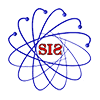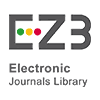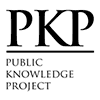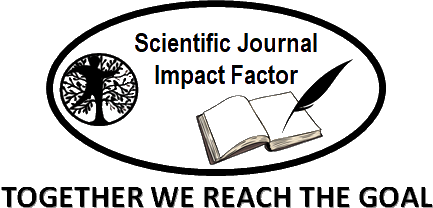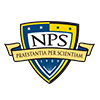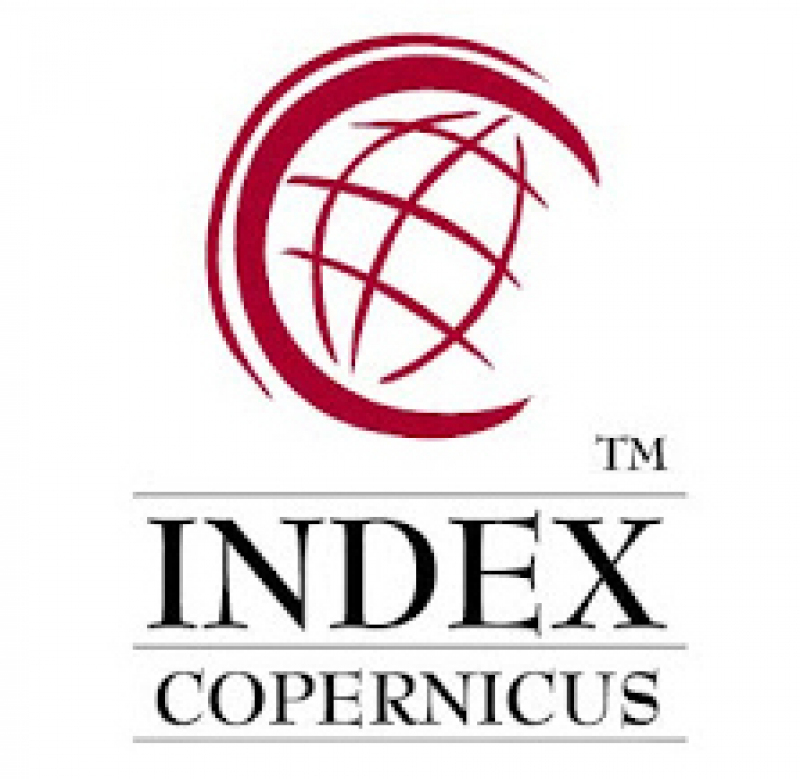Diagnostic Test Research Trends In Science Education: A Systematic Review
Abstract
Keywords
Full Text:
PDFReferences
Adimayuda, R., Aminudin, A. H., Kaniawati, I., Suhendi, E., & Samsudin, A. (2020). A Multitier Open-Ended Momentum And Impulse (MOMI) Instrument: Developing And Assessing Quality Of Conception Of 11 th Grade Sundanese Students With Rasch Analysis. International Journal of Scientific & Technology Research, 9, 2. www.ijstr.org
Aksoy, A. C. A., & Erten, S. (2022). A Four-Tier Diagnostic Test To Determine Pre-Service Science Teachers’ Misconception About Global Warming. Journal of Baltic Science Education, 21(5), 747–761. https://doi.org/10.33225/jbse/22.21.747
Anam, R. S., Widodo, A., Sopandi, W., & Wu, H. K. (2019). Developing a five-tier diagnostic test to identify students’ misconceptions in science: an example of the heat transfer concepts. Elementary Education Online, 18(3), 1014–1029. https://doi.org/10.17051/ilkonline.2019.609690
Andariana, A., Zubaidah, S., Mahanal, S., & Suarsini, E. (2020). Identification of biology students’ misconceptions in human anatomy and physiology course through three-tier diagnostic test. Journal for the Education of Gifted Young Scientists, 8(3), 1071–1085. https://doi.org/10.17478/JEGYS.752438
Astuti, I. A. D., Bhakti, Y. B., Prasetya, R., & Zulherman. (2023). Android-based 4-tier physics test app to identify student misconception profiles. International Journal of Evaluation and Research in Education, 12(3), 1356–1363. https://doi.org/10.11591/ijere.v12i3.25536
Batlolona, J. R., Diantoro, M., Wartono, & Latifah, E. (2019). Creative thinking skills students in physics on solid material elasticity. Journal of Turkish Science Education, 16(1), 48–61. https://doi.org/10.12973/tused.10265a
Birenbaum, M. (1997). Assessment Preferences and Their Relationship to Learning Strategies and Orientations. Higher Education, 33, 71–84.
Borrego, M., Foster, M. J., & Froyd, J. E. (2014). Systematic literature reviews in engineering education and other developing interdisciplinary fields. Journal of Engineering Education, 103(1), 45–76. https://doi.org/10.1002/jee.20038
Bramwell-Lalor, S. (2019). Assessment for Learning on Sustainable Development. In Encyclopedia of Sustainability in Higher Education (pp. 1–9). Springer International Publishing. https://doi.org/10.1007/978-3-319-63951-2_1-1
Brendefur, J. L., Johnson, E. S., Thiede, K. W., Strother, S., & Severson, H. H. (2018). Developing a Multi-Dimensional Early Elementary Mathematics Screener and Diagnostic Tool: The Primary Mathematics Assessment. Early Childhood Education Journal, 46(2), 153–157. https://doi.org/10.1007/s10643-017-0854-x
Burkholder, E., Wang, K., & Wieman, C. (2021). Validated diagnostic test for introductory physics course placement. Physical Review Physics Education Research, 17(1). https://doi.org/10.1103/PhysRevPhysEducRes.17.010127
Canlas, I. P. (2021). Using visual representations in identifying students’ preconceptions in friction. Research in Science and Technological Education, 39(2), 156–184. https://doi.org/10.1080/02635143.2019.1660630
Çelikkanlı, N. Ö., & Kızılcık, H. Ş. (2022). A Review of Studies About Four-Tier Diagnostic Tests in Physics Education. Journal of Turkish Science Education, 19(4), 1291–1311. https://doi.org/10.36681/tused.2022.175
Chubko, N., Morris, J. E., McKinnon, D. H., Slater, E. V., & Lummis, G. W. (2019). SOLO taxonomy as EFL students’ disciplinary literacy evaluation tool in technology-enhanced integrated astronomy course. Language Testing in Asia, 9(1). https://doi.org/10.1186/s40468-019-0095-6
Csapó, B., & Molnár, G. (2019). Online diagnostic assessment in support of personalized teaching and learning: The eDia system. Frontiers in Psychology, 10. https://doi.org/10.3389/fpsyg.2019.01522
Day, I. N. Z., van Blankenstein, F. M., Westenberg, M., & Admiraal, W. (2018). A review of the characteristics of intermediate assessment and their relationship with student grades. Assessment and Evaluation in Higher Education, 43(6), 908–929. https://doi.org/10.1080/02602938.2017.1417974
Djudin, T. (2021). Promoting Students’ Conceptual Change by Integrating The 3-2-1 Reading Technique with Refutation Text in The Physics Learning of Buoyancy. Journal of Turkish Science Education, 18(2), 290–303. https://doi.org/10.36681/tused.2021.66
Filderman, M. J., Toste, J. R., Didion, L. A., Peng, P., & Clemens, N. H. (2018). Data-Based Decision Making in Reading Interventions: A Synthesis and Meta-Analysis of the Effects for Struggling Readers. In Journal of Special Education (Vol. 52, Issue 3, pp. 174–187). SAGE Publications Inc. https://doi.org/10.1177/0022466918790001
Fung, D., & Liang, T. (2023). The Effectiveness of Collaborative Mind Mapping in Hong Kong Primary Science Classrooms. International Journal of Science and Mathematics Education, 21(3), 899–922. https://doi.org/10.1007/s10763-022-10279-1
Gierl, M. J. (2007). Making Diagnostic Inferences About Cognitive Attributes Using the Rule-Space Model and Attribute Hierarchy Method. In Journal of Educational Measurement Winter (Vol. 44, Issue 4).
Hadinugrahaningsih, T., Andina, R. E., Munggaran, L. R., & Rahmawati, Y. (2020). Analysis of students’ alternative conceptions about electrolyte and non-electrolyte solutions using a two-tier diagnostic test for chemistry teaching improvement. Universal Journal of Educational Research, 8(5), 1926–1934. https://doi.org/10.13189/ujer.2020.080529
Halim, A., Mahzum, E., Yacob, M., Irwandi, I., & Halim, L. (2021). The impact of narrative feedback, e-learning modules and realistic video and the reduction of misconception. Education Sciences, 11(4). https://doi.org/10.3390/educsci11040158
Imaduddin, M., Shofa, M. M., Riza, M. F., & Fikri, A. A. (2023). Exploring the pre-service basic science teachers’ misconceptions using the six-tier diagnostic test. International Journal of Evaluation and Research in Education, 12(3), 1626–1636. https://doi.org/10.11591/ijere.v12i3.24603
Irmak, M., Inaltun, H., Ercan-Dursun, J., Yaniş-Kelleci, H., & Yürük, N. (2023). Development and Application of a Three-Tier Diagnostic Test to Assess Pre-service Science Teachers’ Understanding on Work-Power and Energy Concepts. International Journal of Science and Mathematics Education, 21(1), 159–185. https://doi.org/10.1007/s10763-021-10242-6
Istiyani, R., Muchyidin, A., & Rahardjo, D. H. (2018). Analysis of Student Misconception On Geometry Concepts Using Three-Tier Diagnostic Test. Cakrawala Pendidikan, 37(2). https://doi.org/http://dx.doi.org/10.21831/cp.v37i2.14493
Istiyono, E., Sunu Brams Dwandaru, W., Fenditasari, K., Ayub, M. R. S. S. N., & Saepuzaman, D. (2023). The Development of a Four-Tier Diagnostic Test Based on Modern Test Theory in Physics Education. European Journal of Educational Research, 12(1), 371–385. https://doi.org/10.12973/eu-jer.12.1.371
Jumadi, J., Sukarelawan, M. I., & Kuswanto, H. (2023). An investigation of item bias in the four-tier diagnostic test using Rasch model. International Journal of Evaluation and Research in Education, 12(2), 622–629. https://doi.org/10.11591/ijere.v12i2.22845
Kahraman, S. (2019). Evaluating University Students’ Understanding of Atmospheric Environmental Issues Using a Three-Tier Diagnostic Test. International Electronic Journal of Environmental Education, 9(1), 1–17.
Kang, N. H., & Yoon, H. (2022). Identifying Students at Risk in Learning Science: Diagnostic Assessment in Physical Science for Primary and Lower Secondary School Grades. Asia-Pacific Science Education, 8(2), 331–360. https://doi.org/10.1163/23641177-bja10049
Kaniawati, I., Fratiwi, N. J., Danawan, A., Suyana, I., Samsudin, A., & Suhendi, E. (2019). Analyzing students’ misconceptions about Newton’s Laws through Four-Tier Newtonian Test (FTNT). Journal of Turkish Science Education, 16(1), 110–122. https://doi.org/10.12973/tused.10269a
Kiray, S. A., & Simsek, S. (2021). Determination and Evaluation of the Science Teacher Candidates’ Misconceptions About Density by Using Four-Tier Diagnostic Test. International Journal of Science and Mathematics Education, 19(5), 935–955. https://doi.org/10.1007/s10763-020-10087-5
Koretz, D. (2017). Moving Beyond the Failure of Test-Based Accountability.
Laeli, C. M. H., Gunarhadi, & Muzzazinah. (2023). The 3 Tiers Multiple-Choice Diagnostic Test for Primary Students’ Science Misconception. Pegem Egitim ve Ogretim Dergisi, 13(2), 103–111. https://doi.org/10.47750/pegegog.13.02.13
Lim, H. L., & Poo, Y. P. (2021). Diagnostic test to assess misconceptions on photosynthesis and plant respiration: Is it valid and reliable? Jurnal Pendidikan IPA Indonesia, 10(2), 241–252. https://doi.org/10.15294/jpii.v10i2.26944
Majer, J., Slapničar, M., & Devetak, I. (2019). Assessment of the 14- And 15-year-old students’ understanding of the atmospheric phenomena. Acta Chimica Slovenica, 66(3), 659–667. https://doi.org/10.17344/acsi.2019.5087
Maulana, S., Rusilowati, A., Nugroho, S. E., & Susilaningsih, E. (2023). Diagnostic Test for Analyze Students’ Conception in Science Education: A Review Article. https://proceeding.unnes.ac.id/index.php/iset698
Mbwile, B., Ntivuguruzwa, C., & Mashood, K. K. (2023). Exploring the Understanding of Concept Inventories for Classroom Assessment by Physics Tutors and Pre-Service Teachers in Tanzania. African Journal of Research in Mathematics, Science and Technology Education, 27(1), 36–46. https://doi.org/10.1080/18117295.2023.2183607
Métioui, A., & Trudel, L. (2020). Unipolar Reasoning in Electricity: Developing a Digital Two-Tier Diagnostic Test. WSEAS Transactions on Electronics, 11, 86–95. https://doi.org/10.37394/232017.2020.11.11
Miller, M. D., Linn, R. L., & Gronlund, N. E. (2009). Measurement and Assessment in Teaching (10th ed.). Pearson.
Miranda, J. C., & Rada, T. (2018). An examination of the beliefs about physics and learning physics among engineering students. International Journal of Engineering Education, 34(4), 1427–1435.
Mubarokah, F. D., Mulyani, S., & Indriyanti, N. Y. (n.d.). Identifying Students’ Misconceptions of Acid-Base Concepts Using a Three-Tier Diagnostic Test: A Case of Indonesia and Thailand. https://doi.org/10.12973/tused.10256a
Nahadi, N. (2022). Development and Application of A Two-Tier Acid-Base Misconception Diagnostic Test Based On Pictorial To Identifying Student Misconceptions In Chemistry. In Journal of Engineering Science and Technology Special Issue on ISCoE2022.
Nasir, M., Cari, Sunarno, W., & Rahmawati, F. (2023). The Development of a Two-Tier Diagnostic Test for Student Understanding of Light. Journal of Turkish Science Education, 20(1), 150–172. https://doi.org/10.36681/tused.2023.009
Nurfalah, E., Arofah, I., Yuniwati, I., Haslinah, A., & Lestari, D. R. (2020). Construction a diagnostic test in the form of two-tier multiple choice on calculus material. Mathematics and Statistics, 8(5), 577–582. https://doi.org/10.13189/ms.2020.080512
Odden, T. O. B., Lockwood, E., & Caballero, M. D. (2019). Physics computational literacy: An exploratory case study using computational essays. Physical Review Physics Education Research, 15(2). https://doi.org/10.1103/PhysRevPhysEducRes.15.020152
Osborne, J., & Dillon, J. (2014). Science Education in Europe: Critical Reflections. https://www.researchgate.net/publication/252404504
Page, M. J., McKenzie, J. E., Bossuyt, P. M., Boutron, I., Hoffmann, T. C., Mulrow, C. D., Shamseer, L., Tetzlaff, J. M., Akl, E. A., Brennan, S. E., Chou, R., Glanville, J., Grimshaw, J. M., Hróbjartsson, A., Lalu, M. M., Li, T., Loder, E. W., Mayo-Wilson, E., McDonald, S., … Moher, D. (2021). The PRISMA 2020 statement: An updated guideline for reporting systematic reviews. In The BMJ (Vol. 372). BMJ Publishing Group. https://doi.org/10.1136/bmj.n71
Petticrew, M., & Roberts, H. (2006). Systematic reviews in the social sciences: A practical guide. Blackwell Publishing.
Phanphech, P., Tanitteerapan, T., Mungkung, N., Arunrungrusmi, S., Chunkul, C., Songruk, A., Yuji, T., & Kinoshita, H. (2022). An Analysis of Student Anxiety Affecting on Online Learning on Conceptual Applications in Physics: Synchronous vs. Asynchronous Learning. Education Sciences, 12(4). https://doi.org/10.3390/educsci12040278
Ping, I. L. L., Halim, L., & Osman, K. (2020). Rural students’ conceptual understanding of diffusion and osmosis. Asia Pacific Journal of Educators and Education, 35(1), 93–109. https://doi.org/10.21315/apjee2020.35.1.6
Prodjosantoso, A. K., Hertina, A. M., & Irwanto. (2019). The misconception diagnosis on ionic and covalent bonds concepts with three tier diagnostic test. International Journal of Instruction, 12(1), 1477–1488. https://doi.org/10.29333/iji.2019.12194a
Ramadhan, S., Mardapi, D., Prasetyo, Z. K., & Utomo, H. B. (2019). The development of an instrument to measure the higher order thinking skill in physics. European Journal of Educational Research, 8(3), 743–751. https://doi.org/10.12973/eu-jer.8.3.743
Safadi, R., & Saadi, S. (2021). Learning from Self-Diagnosis Activities when Contrasting Students’ Own Solutions with Worked Examples: the Case of 10th Graders Studying Geometric Optics. Research in Science Education, 51(2), 523–546. https://doi.org/10.1007/s11165-018-9806-8
Soeharto, Csapó, B., Sarimanah, E., Dewi, F. I., & Sabri, T. (2019). A review of students’ common misconceptions in science and their diagnostic assessment tools. Jurnal Pendidikan IPA Indonesia, 8(2), 247–266. https://doi.org/10.15294/jpii.v8i2.18649
Soeharto, S., & Csapó, B. (2021). Evaluating item difficulty patterns for assessing student misconceptions in science across physics, chemistry, and biology concepts. Heliyon, 7(11). https://doi.org/10.1016/j.heliyon.2021.e08352
Sopandi, W., & Sukardi, R. R. (2020). Using four tier diagnostic tests to understand the conceptions held by pre service primary school teachers about sea pollutant migration. Review of International Geographical Education Online, 10(2), 13–29. https://doi.org/10.33403/rigeo.629388
Sun, L., Kangas, M., Ruokamo, H., & Siklander, S. (2023). A systematic literature review of teacher scaffolding in game-based learning in primary education. In Educational Research Review (Vol. 40). Elsevier Ltd. https://doi.org/10.1016/j.edurev.2023.100546
Suprapto, N., Abidah, A., Dwiningsih, K., Jauhariyah, M. N. R., & Saputra, A. (2018). Minimizing misconception of ionization energy through three-tier diagnostic test. Periodico Tche Quimica, 15(30), 387–396. https://doi.org/10.52571/ptq.v15.n30.2018.390_periodico30_pgs_387_396.pdf
Taban, T., & Kiray, S. A. (2022). Determination of Science Teacher Candidates’ Misconceptions on Liquid Pressure with Four-Tier Diagnostic Test. International Journal of Science and Mathematics Education, 20(8), 1791–1811. https://doi.org/10.1007/s10763-021-10224-8
Van Den Eynde, S., Schermerhorn, B. P., Deprez, J., Goedhart, M., Thompson, J. R., & De Cock, M. (2020). Dynamic conceptual blending analysis to model student reasoning processes while integrating mathematics and physics: A case study in the context of the heat equation. Physical Review Physics Education Research, 16(1). https://doi.org/10.1103/PhysRevPhysEducRes.16.010114
van Eck, N. J., & Waltman, L. (2010). Software survey: VOSviewer, a computer program for bibliometric mapping. Scientometrics, 84(2), 523–538. https://doi.org/10.1007/s11192-009-0146-3
von der Embse, N. P., Pendergast, L. L., Segool, N., Saeki, E., & Ryan, S. (2016). The influence of test-based accountability policies on school climate and teacher stress across four states. Teaching and Teacher Education, 59, 492–502. https://doi.org/10.1016/j.tate.2016.07.013
Wancham, K., Tangdhanakanond, K., & Kanjanawasee, S. (2023a). Development of the automatic item generation system for the diagnosis of misconceptions about force and laws of motion. Eurasia Journal of Mathematics, Science and Technology Education, 19(6). https://doi.org/10.29333/ejmste/13251
Wancham, K., Tangdhanakanond, K., & Kanjanawasee, S. (2023b). Sex and Grade Issues in Influencing Misconceptions about Force and Laws of Motion: An Application of Cognitively Diagnostic Assessment. International Journal of Instruction, 16(2), 437–456. https://doi.org/10.29333/iji.2023.16224a
Yeo, J.-H., Yang, H.-H., & Cho, I.-H. (2022). Using A Three-Tier Multiple-Choice Diagnostic Instrument Toward Alternative Conceptions Among Lower-Secondary School Students In Taiwan: Taking Ecosystems Unit As An Example. Journal of Baltic Science Education, 21(1), 69–83. https://doi.org/10.33225/jbse/22.21.69
Yusron, E., Istiyono, E., Hidayati, K., Retnawati, H., Hasan, A., & Karimah, U. (2024). Teacher’s Perspective on Diagnostic Assessment Process During the Pandemic Covid-19. Pegem Journal of Education and Instruction, 14(4), 400–409. https://doi.org/10.47750/pegegog.14.04.38
DOI: http://dx.doi.org/10.18415/ijmmu.v12i5.6679
Refbacks
- There are currently no refbacks.
Copyright (c) 2025 International Journal of Multicultural and Multireligious Understanding

This work is licensed under a Creative Commons Attribution-NonCommercial-NoDerivatives 4.0 International License.
https://ijmmu.com
editor@ijmmu.com
facebook.com/ijmmu
Copyright © 2014-2018 IJMMU. All rights reserved.











